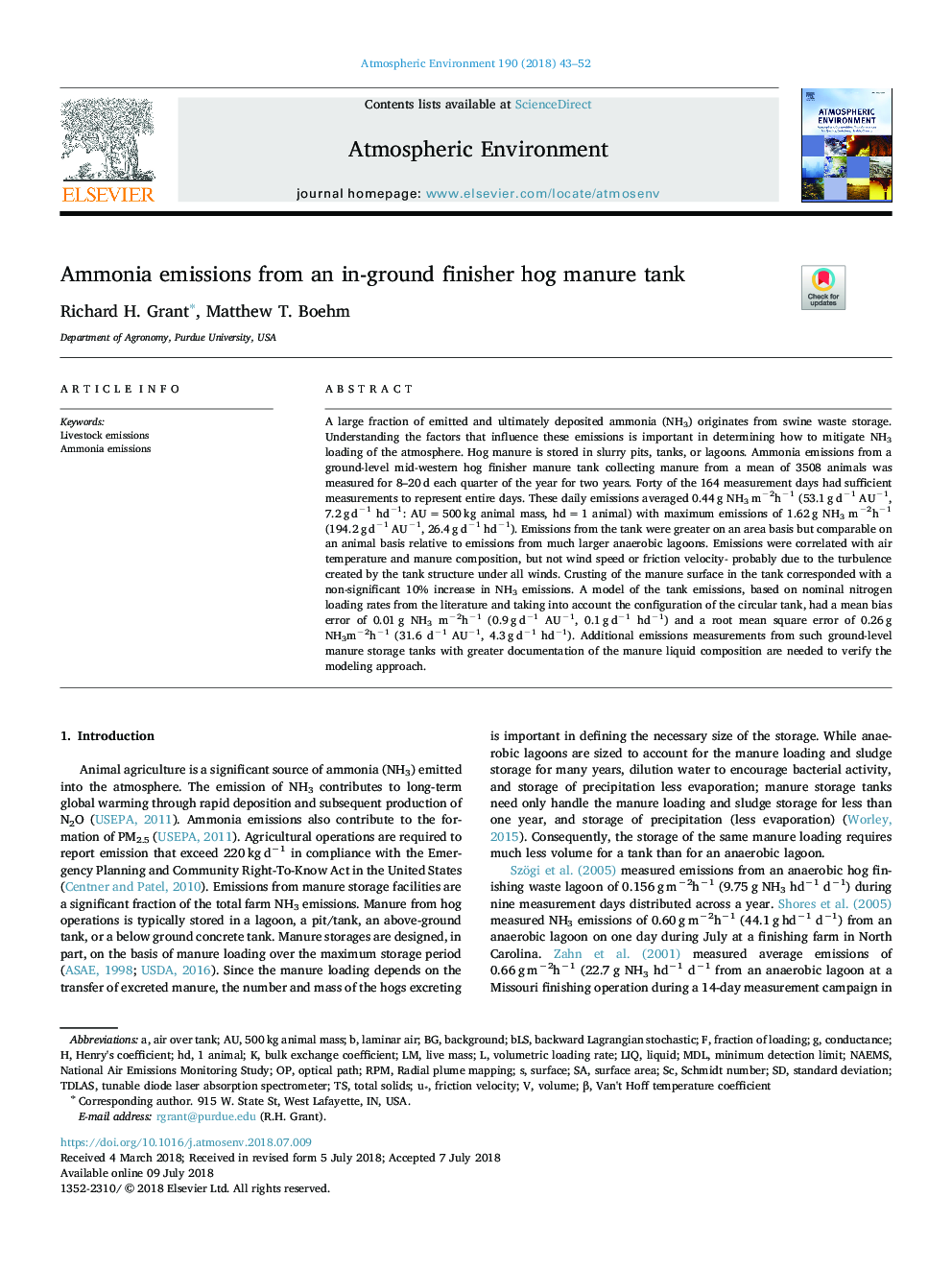| Article ID | Journal | Published Year | Pages | File Type |
|---|---|---|---|---|
| 8863461 | Atmospheric Environment | 2018 | 10 Pages |
Abstract
A large fraction of emitted and ultimately deposited ammonia (NH3) originates from swine waste storage. Understanding the factors that influence these emissions is important in determining how to mitigate NH3 loading of the atmosphere. Hog manure is stored in slurry pits, tanks, or lagoons. Ammonia emissions from a ground-level mid-western hog finisher manure tank collecting manure from a mean of 3508 animals was measured for 8-20â¯d each quarter of the year for two years. Forty of the 164 measurement days had sufficient measurements to represent entire days. These daily emissions averaged 0.44â¯g NH3 mâ2hâ1 (53.1â¯gâ¯dâ1 AUâ1, 7.2â¯gâ¯dâ1 hdâ1: AUâ¯=â¯500â¯kg animal mass, hdâ¯=â¯1 animal) with maximum emissions of 1.62â¯g NH3 mâ2hâ1 (194.2â¯gâ¯dâ1 AUâ1, 26.4â¯gâ¯dâ1 hdâ1). Emissions from the tank were greater on an area basis but comparable on an animal basis relative to emissions from much larger anaerobic lagoons. Emissions were correlated with air temperature and manure composition, but not wind speed or friction velocity- probably due to the turbulence created by the tank structure under all winds. Crusting of the manure surface in the tank corresponded with a non-significant 10% increase in NH3 emissions. A model of the tank emissions, based on nominal nitrogen loading rates from the literature and taking into account the configuration of the circular tank, had a mean bias error of 0.01â¯g NH3 mâ2hâ1 (0.9â¯gâ¯dâ1 AUâ1, 0.1â¯gâ¯dâ1 hdâ1) and a root mean square error of 0.26â¯g NH3mâ2hâ1 (31.6 dâ1 AUâ1, 4.3â¯gâ¯dâ1 hdâ1). Additional emissions measurements from such ground-level manure storage tanks with greater documentation of the manure liquid composition are needed to verify the modeling approach.
Keywords
Related Topics
Physical Sciences and Engineering
Earth and Planetary Sciences
Atmospheric Science
Authors
Richard H. Grant, Matthew T. Boehm,
